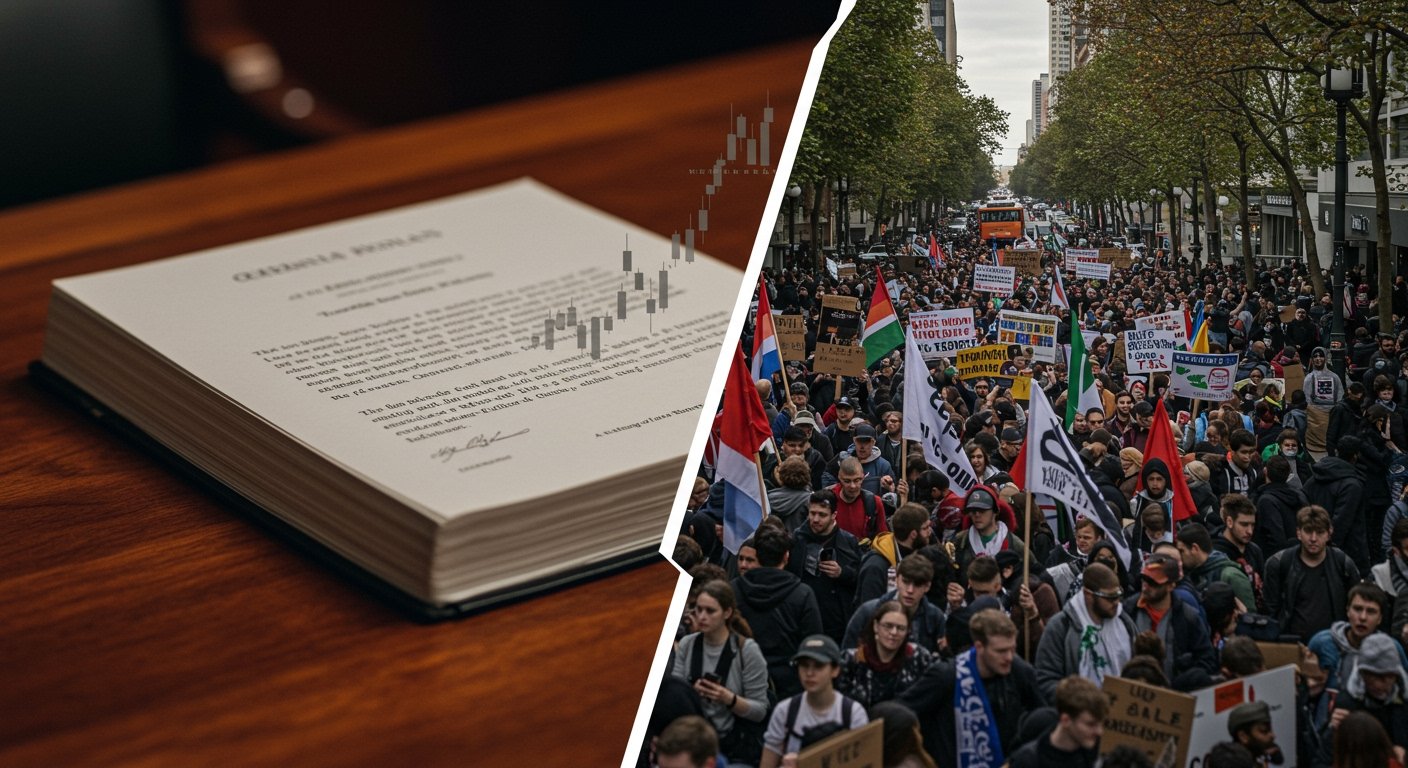Washington, D.C. — The United States Congress on Thursday, July 3, 2025, delivered a major legislative victory to President Donald Trump, passing his signature tax and spending package informally known as the “Big Beautiful Bill” or “One Big Beautiful Bill.” The expansive measure now heads to the president’s desk for an expected signing on Friday, July 4, 2025, a date already marked by hundreds of nationwide “Free America” protests organized by groups including the Women’s March.
The bill’s passage followed a narrow 218-214 vote in the House of Representatives, coming after it had previously cleared the Senate by an equally slim 51-50 margin, with Vice President JD Vance casting the decisive tie-breaking vote. The House vote saw unified opposition from all Democrats, joined by two Republican dissenters: Representatives Thomas Massie of Kentucky and Brian Fitzpatrick of Pennsylvania. Their opposition marked a rare break from party lines on a key administration priority.
A Sprawling Package of Tax Cuts and Spending Shifts
The 887-page legislation represents a significant overhaul of federal fiscal policy, combining extensive tax reductions with targeted spending increases and substantial cuts to social safety net programs. At its core, the bill extends key provisions of the 2017 tax cuts, a cornerstone of the previous Trump administration’s economic agenda.
The tax component includes an estimated $4.5 trillion in overall tax reductions over the next decade, with analyses indicating that the primary beneficiaries will be higher-income earners. The package also introduces several new tax breaks, including deductions for tips and overtime pay, as well as interest paid on loans for US-made automobiles. Additionally, it provides a $6,000 deduction specifically for older adults earning under $75,000 annually, a provision aimed at providing relief to a segment of the senior population.
On the spending side, the bill allocates significant funds to boost border security, totaling approximately $350 billion. This includes a notable $46 billion earmarked for the construction of a border wall and funding intended to add 10,000 additional agents to Immigration and Customs Enforcement (ICE) by 2029. National defense spending is also slated for a considerable increase under the bill’s provisions.
Conversely, the legislation imposes substantial cuts to vital social safety net programs. Programs facing significant reductions include Medicaid, the federal-state health insurance program for low-income Americans, and the Supplemental Nutrition Assistance Program (SNAP), which provides food assistance to millions of eligible individuals and families.
Estimated Impacts: Deficit Increase and Benefit Losses
Critics of the bill have raised alarm over its projected fiscal and social consequences, citing estimates from the non-partisan Congressional Budget Office (CBO). According to the CBO’s analysis, the “Big Beautiful Bill” is expected to add between $3.3 trillion and $3.4 trillion to the federal deficit over the next ten years, raising concerns about the nation’s long-term fiscal health.
The CBO’s assessment also projects significant impacts on individuals relying on federal assistance. Estimates suggest that between 11.8 million and 17 million Americans could lose health coverage under Medicaid as a direct result of the bill’s spending cuts. Furthermore, the CBO estimates indicate that approximately 4.7 million participants in the SNAP program could lose access to their benefits.
These projections have fueled intense debate over the bill’s equity and its potential effects on vulnerable populations, contrasting the broad tax cuts with the reductions in assistance programs.
Nationwide Protests Coincide with Expected Signing
The bill’s passage and the broader policies of the Trump administration have ignited widespread public opposition, culminating in hundreds of nationwide demonstrations planned for July 4, 2025. Operating under the banner of “Free America,” these anti-Trump protests are scheduled to take place across the country, involving a variety of community gatherings and public demonstrations.
Organized by a coalition of groups that includes the Women’s March, the protests aim to voice dissent against the legislative agenda and its perceived impacts on American society. The timing of these demonstrations to coincide with the expected presidential signing of the controversial bill underscores the deep divisions and passionate activism surrounding the measure.
As the bill awaits the president’s signature on the national holiday, the diverging reactions – a presidential victory on one hand and widespread public protest on the other – highlight the profound and contentious nature of the “Big Beautiful Bill” and its potential future effects on the nation’s economy, social fabric, and fiscal landscape.





